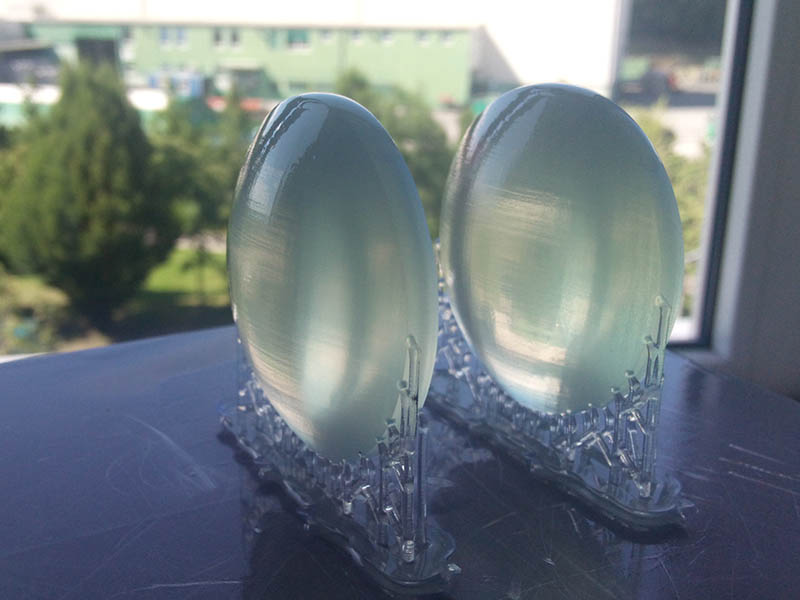Prescription safety glasses are essential for individuals who require vision correction and work in environments where eye protection is crucial. This comprehensive guide covers the importance of prescription safety glasses, types, standards, features, and how to choose the right pair for your needs.
prescription safety glasses, vision correction, eye protection, safety standards, workplace safety, eyewear, protective eyewear, industrial safety, ANSI Z87.1, safety goggles
The Importance of Prescription Safety Glasses
Protecting Your Eyes
Prescription safety glasses are designed to provide both vision correction and protection against hazards such as dust, debris, chemicals, and impact. They are essential for preventing eye injuries in various settings, including industrial workplaces, laboratories, construction sites, and sports activities.

Meeting Safety Standards
Unlike regular prescription glasses, safety glasses must meet specific safety standards to ensure they provide adequate protection. These standards are set by organizations such as the American National Standards Institute (ANSI) and the Occupational Safety and Health Administration (OSHA).
Enhancing Productivity and Compliance
Wearing prescription safety glasses ensures that individuals with vision correction needs can work safely and efficiently. They eliminate the need to wear safety goggles over regular glasses, improving comfort and compliance with safety regulations.
Understanding Safety Standards
ANSI Z87.1 Standard
The ANSI Z87.1 standard specifies the performance criteria for safety glasses, including impact resistance, coverage, and optical clarity. Safety glasses that meet this standard are marked with “Z87” on the frame.
OSHA Requirements
OSHA mandates that employers provide appropriate eye protection for employees exposed to eye hazards. Prescription safety glasses must meet OSHA standards and be suitable for the specific hazards present in the workplace.
European EN166 Standard
In Europe, the EN166 standard covers the requirements for personal eye protection. It specifies criteria for optical quality, mechanical strength, and resistance to various hazards. Safety glasses meeting this standard are marked with “EN166.”
Types of Prescription Safety Glasses
Impact-Resistant Safety Glasses
Impact-resistant safety glasses are designed to protect against flying debris and projectiles. They are made from durable materials such as polycarbonate or Trivex, which offer excellent impact resistance and optical clarity.
Chemical Splash Goggles
Chemical splash goggles provide a seal around the eyes to protect against chemical splashes and fumes. They are commonly used in laboratories and chemical processing plants. Prescription inserts can be added to these goggles for vision correction.
Dust and Particle Protection
Safety glasses with foam or rubber seals around the lenses protect against dust, dirt, and other fine particles. They are ideal for woodworking, metalworking, and construction environments.
Welding Helmets and Goggles
Welding helmets and goggles protect against the intense light and sparks produced during welding. They feature dark lenses to filter out harmful ultraviolet (UV) and infrared (IR) radiation. Prescription safety lenses can be incorporated into these protective devices.

Sports Safety Glasses
Sports safety glasses are designed for activities such as basketball, racquetball, and cycling. They offer impact resistance and may include features like anti-fog coatings and adjustable straps. Prescription lenses can be integrated to ensure clear vision during sports.
Key Features of Prescription Safety Glasses
Lens Materials
The choice of lens material is crucial for safety and comfort:
- Polycarbonate: Lightweight, impact-resistant, and provides 100% UV protection. Ideal for most safety applications.
- Trivex: Similar to polycarbonate but offers better optical clarity and scratch resistance.
- Glass: Provides excellent optical clarity and scratch resistance but is heavier and less impact-resistant than polycarbonate or Trivex.
Coatings and Treatments
Various coatings and treatments can enhance the performance of safety lenses:
- Anti-Scratch Coating: Increases the durability of the lenses by reducing the likelihood of scratches.
- Anti-Fog Coating: Prevents fogging in humid environments or during temperature changes.
- UV Protection: Blocks harmful UV rays, essential for outdoor work.
- Tinted Lenses: Reduces glare and enhances contrast in bright environments.
- Polarized Lenses: Eliminates glare from reflective surfaces, improving visual comfort.
Frame Materials and Designs
The frame material and design contribute to the durability and comfort of safety glasses:
- Nylon: Lightweight, flexible, and durable. Commonly used in safety eyewear.
- Metal: Offers strength and durability but can be heavier and less flexible.
- Wraparound Designs: Provide additional side protection and a secure fit, reducing the risk of eye injuries from peripheral hazards.
- Adjustable Features: Adjustable nose pads, temple arms, and straps enhance comfort and fit.
Prescription Options
Prescription safety glasses can be customized to meet your vision correction needs:
- Single Vision Lenses: Corrects one field of vision (distance, intermediate, or near).
- Bifocal Lenses: Provides two distinct areas of vision correction, one for distance and one for near.
- Progressive Lenses: Offers a seamless transition between multiple focal points (distance, intermediate, and near) without visible lines.
How to Choose the Right Prescription Safety Glasses
Assessing Workplace Hazards
Identify the specific hazards present in your workplace or activity to determine the appropriate type of safety glasses. Consider factors such as impact risk, chemical exposure, dust, and UV radiation.
Consulting an Eye Care Professional
Visit an optometrist or ophthalmologist for a comprehensive eye exam and to get a prescription for safety glasses. They can help you choose the right lenses and frames based on your vision needs and workplace requirements.
Ensuring Proper Fit and Comfort
Proper fit is essential for both safety and comfort. Ensure that the safety glasses fit securely without slipping or causing discomfort. Adjustable features can help achieve a better fit.
Verifying Safety Certifications
Check for safety certifications such as ANSI Z87.1 or EN166 to ensure that the glasses meet the necessary safety standards. Look for the certification markings on the frame.
Considering Additional Features
Depending on your needs, consider additional features such as anti-fog coatings, tinted lenses, or prescription inserts for goggles. These features can enhance the performance and comfort of your safety glasses.
Caring for Your Prescription Safety Glasses
Cleaning and Maintenance
Regular cleaning and maintenance are crucial to keep your safety glasses in good condition. Use a microfiber cloth and lens cleaning solution to clean the lenses. Avoid using abrasive materials that can scratch the lenses.
Storing Your Glasses
Store your safety glasses in a protective case when not in use to prevent damage. Keep them in a clean, dry place away from direct sunlight and extreme temperatures.
Inspecting for Damage
Regularly inspect your safety glasses for signs of damage, such as cracks, scratches, or loose parts. Replace damaged glasses immediately to ensure continued protection and vision correction.
Replacing Lenses and Frames
Prescription safety glasses may need periodic replacement due to changes in your prescription or wear and tear. Consult with your eye care professional to determine when to replace your lenses or frames.
The Role of Prescription Safety Glasses in Various Industries
Manufacturing and Industrial Settings
In manufacturing and industrial environments, workers are often exposed to flying debris, chemicals, and heavy machinery. Prescription safety glasses provide essential protection against these hazards while ensuring clear vision for tasks that require precision.
Construction Sites
Construction workers face risks such as falling objects, dust, and UV exposure. Prescription safety glasses with impact-resistant lenses and side shields help protect against these hazards and improve visibility on the job site.
Laboratories and Medical Facilities
In laboratories and medical facilities, safety glasses protect against chemical splashes, biological hazards, and sharp instruments. Prescription safety goggles with a secure seal are particularly important in these settings to prevent contamination and injury.
Sports and Recreational Activities
Athletes and outdoor enthusiasts benefit from prescription safety glasses that protect against impact, UV radiation, and environmental elements. Sports safety glasses are designed to stay securely in place during physical activity while providing clear vision and protection.
Agricultural and Farming Operations
Farmers and agricultural workers are exposed to dust, chemicals, and UV radiation. Prescription safety glasses with wraparound designs and tinted lenses help protect their eyes and enhance visual comfort during long hours outdoors.
Innovations in Prescription Safety Glasses
Smart Safety Glasses
Smart safety glasses integrate advanced technology such as augmented reality (AR) displays, heads-up information, and real-time data monitoring. These innovations enhance safety and productivity by providing workers with critical information without the need to look away from their tasks.
Custom-Fit Safety Glasses
Advances in 3D printing and digital scanning technology allow for the creation of custom-fit safety glasses tailored to the unique contours of an individual’s face. This ensures a more secure fit and greater comfort.

Enhanced Lens Technologies
New lens technologies are continually being developed to improve the performance of safety glasses. These include lenses with advanced anti-fog coatings, increased impact resistance, and enhanced UV protection.
Conclusion
Prescription safety glasses are essential for individuals who need vision correction and work in environments where eye protection is crucial. Understanding the types, standards, and features of these glasses helps you choose the right pair for your needs. Regular eye exams, proper fitting, and caring for your safety glasses ensure they provide optimal protection and clear vision. For personalized guidance and high-quality prescription safety glasses, consult with your eye care professional and ensure you are equipped with the best eyewear for your specific requirements.
For more information on safety standards and eye protection, visit the National Institute for Occupational Safety and Health (NIOSH).
Explore innovative safety eyewear solutions at Uvex Safety.
Discover customized prescription safety glasses options at Rx-Safety.
Learn about smart safety glasses and their applications at Vuzix.

